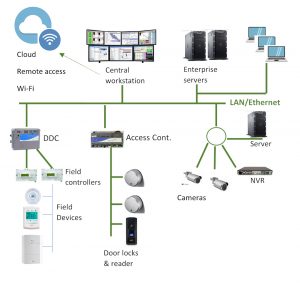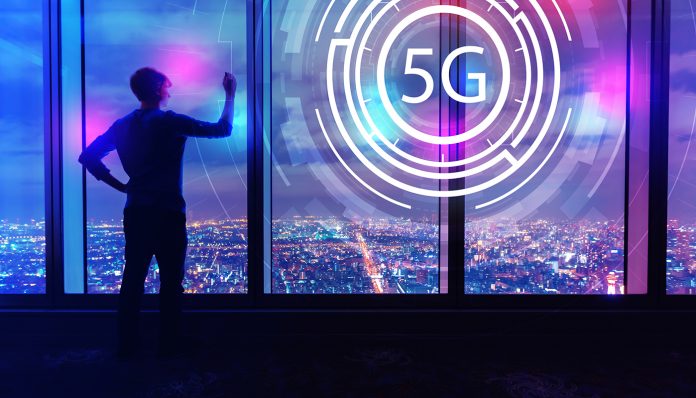With 5G connections set to surge, Lone Hansen, manager of the IT Cable Group at BSRIA Worldwide Market Intelligence, looks at how to maximise the capabilities of the technology in buildings
Covid-19 is arguably the biggest single global event in modern history, impacting most aspects of our lives. A significant change has been the ensuing digital transformation, with many people working remotely as well as shopping, banking and finding entertainment online. It has increased the acceptance of the cloud and boosted the uptake of artificial intelligence and machine learning.
Building networks
Buildings need networks and the uptake of IP products and IP controllers have gained share year-on-year and today accounts for 65% of the controllers installed with Building Automation Controls globally. Most operational technology (OT) networks installed today are IP, but are often set up as separate networks: one for the building automation system, one for access controls, one for lighting, one for surveillance etc.
The networks are often installed by different subcontractors, the LAN network, surveillance cameras and potentially access controls by one contractor, BMS and HVAC by another, and lighting by a third. The systems or VLANs can communicate with one another via a common platform. This setup also provides additional cybersecurity.
One physical network supporting multiple virtual subnets
At the latest Controls-con conference in May this year, 5G was one of the topics and real estate experts strongly advised controls companies to embrace it. Their main argument was: why have two networks when you can have one?

Uptake of 5G in buildings
5G provides high bandwidth, low latency, reliability, broad coverage and a high level of security against cyber-attacks. It will have a huge impact in the relatively near future on smart transport systems and autonomous vehicles, and in healthcare – enabling virtual medicine and robotic surgery.
However, several experts predict a slow uptake of 5G in buildings as LAN and Wi-Fi, particularly Wi-Fi 6 with its support of multi-protocols such as LoRa, BLE, Zigbee and Enocean, provide a cost-effective and reliable solution in buildings for the transmission of large amounts of data.
5G may often be insufficient in buildings as the signal struggles to penetrate glass and other building materials. To extend and boost cellular coverage in buildings, DAS (distributed antenna systems) or small cell technology can be installed, but DAS is only economically viable in very large buildings as the client needs to bring the base stations of all major network operators into the building.
Other issues include the initial investment cost and who will bear this, the carrier, building owner or tenant/occupier? Some providers are looking at pay-as-a-service models. Ownership of data is, as always, a factor that needs to be resolved
The uptake of 5G is increasing. As of early 2021 there are 220m 5G subscriptions. Deployment in many countries has been delayed by the Covid crisis, but the uptake of 5G will increase. GSMA predicts 1.8bn 5G connections by 2026.
For further details of BSRIA’s portfolio of publications, including IoT and BACS, please contact BSRIA Worldwide Market Intelligence using the details below, or view information on recently published reports here.
Lone Hansen
Manager – IT Cable Group
BSRIA Worldwide Market Intelligence
Tel: +44 (0)1344 465600
Twitter: @BSRIALtd
LinkedIn: bsria
Please note: this is a commercial profile.





![[Video] Fireco: 80 new fire doors required for residential flats in London](https://www.pbctoday.co.uk/news/wp-content/uploads/2025/04/2024-06-01-Lords-view-one_1200x750_004-218x150.webp)








